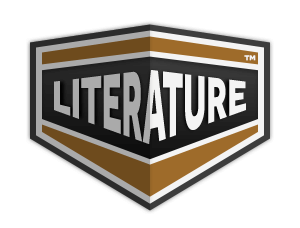India's Inspirational Journey from Antiquity to Modernity
I wrote this story to enhance my knowledge about the history and heritage of my country, my India.
Introduction: India is a vibrant country with a diverse population. It continues to advance despite ongoing challenges. Its highly-developed infrastructure, scientific community and skilled youth makes it vital for its cultural and economic prosperity. This was not always the case for India and hence let us explore India's history by following its three chapters – Ancient, Medieval, and Modern India. Chapter 1 Ancient India: a) The Indus Valley Civilization The Indus Valley Civilization, or the first major civilization of India began to flourish from 2600 BCE. It was also called the Harappan Civilization and it flourished in the Indus River basins. Planned cities with intricate drainage and sewage systems were its defining features. It created and controlled trade with the Mesopotamian and Egyptian Civilizations. b) The Vedic Age The Vedic Age started after the Indus Valley civilization began to crumble. The Vedic Age saw the composition of the Vedas, which are revered as ancient Hindu holy writings. • Hymns to different Gods can be found in the Rig Veda, the oldest and most important of the Vedas. • There are songs and verses in the Sama Veda. It has a strong emphasis on musical recitation and is connected to rituals. • The Yajur Veda contains guidelines for sacrifices and rites. • There are songs about magic, healing, and practical things in the Atharva Veda. c) Composition of epics Composition of the Ramayana (by Valmiki) and Mahabharata (by Ved Vyas) took place after the Vedic Period. d) Dynastic Rule India's past was replete with dynastic rule experiences that influenced its political, social, and cultural climate. Here are a few well-known ones: • Maurya Dynasty: Chandragupta Maurya established the first momentous kingdom in Ancient India. It is renowned for Ashoka the Great, a well-known king, and for its effective administrative system, which has influenced modern administration in India. • Gupta Dynasty: The Gupta Empire is called India's "Golden Age". It was thriving in literature, science, mathematics, and arts. During that time, poets like Kalidasa and mathematicians like Aryabhata flourished. e) Advancements made during the ancient period Significant advances in mathematics were made in Ancient India. Here are a few noteworthy accomplishments: • Zero: In the fifth century CE, Aryabhata presented the idea of zero. This made large number calculations feasible. • Numerical Notations: Symbols representing the digits 1 to 9 were created. This system was adopted by Arab traders and was subsequently called Arabic numerals. Chapter 2 Medieval India: It describes the time between the Gupta Empire's fall and the Mughal Empire's rise. Medieval India was home to more than 40 states at that time. a) Chess It was created during the Middle Ages. The game's ancestor, chaturanga, is an old game. Chaturanga included sculptures of chariots, elephants, troops, and cavalry. The game made its way to Persia, the Arab world, and ultimately Europe, where it evolved into the modern game of chess. b) Bhakti Movement and Sufism Medieval India was enhanced in terms of culture and religion by the Bhakti Movement and Sufism. In the Bhakti Movement, Hindu devotionalism was embodied. Bhakti writers wrote devotional poems and songs. They promoted love and submission to a personal deity (usually Vishnu or Shiva) through devotion (bhakti). Sufism is the devotional facet of Islam. Sufis propagated intimacy and love with God. c) Architecture The growth of Indo-Islamic architecture also occurred during this period. A glorious example is the Qutub Minar, which has influenced modern architecture. d) The Delhi Sultanate It started in 1206 and declined in 1526. Qutb-ud-din Aibak from the Mamluk dynasty was the founder of the Delhi Sultanate. He had initiated the Qutub Minar. Nonetheless, Iltutmish completed the construction of that astounding structure. The empire had grown under him. As a result, Iltutmish is regarded as the Delhi Sultanate's true founder. Thereafter, dynasties: Khalji, Tughlaq, Sayyid, and the Lodi controlled Delhi sequentially. e) Advancements made during the medieval period India achieved significant advancements in science, mathematics, and technology during the Middle Ages. Here are a few remarkable accomplishments: • Aryabhata assembled all the Indian mathematics into a collection of poetry known as the Arya Bhatiya. Trigonometry, algebra, and arithmetic were all addressed in his work. He is also credited for determining the length of the year, calculating π to four decimal places, and acknowledging the Earth as a rotating sphere. • Important contributions were also made by Brahmagupta, who wrote books on astronomy and mathematics. He defined gravity as a force that attracts. He is also recognized for having given the first lucid explanation of the quadratic formula. Late Medieval India marked the start of the Mughal rule and Modern India marked the end of it. Chapter 3 Modern India (Pre-Independence): The era spanning from the middle of the 18th century to the present time is referred to as Modern India. a) The Mughal Rule After winning the Battle of Panipat, Babur established the Mughal Empire in 1526. Babur, Humayun, Akbar, Jahangir, Shah Jahan, and Aurangzeb were the principal Mughal monarchs. The Mughals encouraged music, literature, and art. Some of their architectural masterpieces are the Red Fort and the Taj Mahal. These architectural masterpieces were durable and resilient. They demonstrated that with time, the quality of architecture improves. The Mughal Empire crumbled in 1858 because of economic hardships and invasions. b) The Rule of the Firangis After decline of the Mughal empire, the British set their foot in India to engage in trade. They took advantage of the fact that India was not unified at that time and seized the monarchy. Indian economy suffered greatly because of the British. Indian traditional society was affected by British policies. Indians' preferences, culture, morals, and aspirations were all altered under British control. An important turning point against British rule in India was the Sepoy Mutiny of 1857. After India attained freedom in 1947, colonial control came to an end. The freedom fighters deserve all the credit for this, as they gave their lives to ensure that India have a prosperous future. Mahatma Gandhi, Jawaharlal Nehru, Subhash Chandra Bose, and Sardar Vallabhbhai Patel are a few noteworthy examples. After partition, India was divided into Pakistan and India. As a result, the anguish and brutality of division coexisted with the nation's happiness following independence. Modern India (Post-Independence) a) Contributions in the field of science and technology India's modern era has made substantial contributions to science and technology, which have elevated India’s profile. Here are a few of these: • Improved Life Expectancy: Since 1947, India has significantly improved its life expectancy from 32 years to 69 years. High birth rates and low death rates are the reason for this, which are possible only because of greater healthcare facilities.
Translation
Translate and read this book in other languages:
Select another language:
- - Select -
- 简体中文 (Chinese - Simplified)
- 繁體中文 (Chinese - Traditional)
- Español (Spanish)
- Esperanto (Esperanto)
- 日本語 (Japanese)
- Português (Portuguese)
- Deutsch (German)
- العربية (Arabic)
- Français (French)
- Русский (Russian)
- ಕನ್ನಡ (Kannada)
- 한국어 (Korean)
- עברית (Hebrew)
- Gaeilge (Irish)
- Українська (Ukrainian)
- اردو (Urdu)
- Magyar (Hungarian)
- मानक हिन्दी (Hindi)
- Indonesia (Indonesian)
- Italiano (Italian)
- தமிழ் (Tamil)
- Türkçe (Turkish)
- తెలుగు (Telugu)
- ภาษาไทย (Thai)
- Tiếng Việt (Vietnamese)
- Čeština (Czech)
- Polski (Polish)
- Bahasa Indonesia (Indonesian)
- Românește (Romanian)
- Nederlands (Dutch)
- Ελληνικά (Greek)
- Latinum (Latin)
- Svenska (Swedish)
- Dansk (Danish)
- Suomi (Finnish)
- فارسی (Persian)
- ייִדיש (Yiddish)
- հայերեն (Armenian)
- Norsk (Norwegian)
- English (English)
Citation
Use the citation below to add this book to your bibliography:
Style:MLAChicagoAPA
"India's Inspirational Journey from Antiquity to Modernity Books." Literature.com. STANDS4 LLC, 2025. Web. 22 Feb. 2025. <https://www.literature.com/book/india%27s_inspirational_journey_from_antiquity_to_modernity_3319>.








Discuss this India's Inspirational Journey from Antiquity to Modernity book with the community:
Report Comment
We're doing our best to make sure our content is useful, accurate and safe.
If by any chance you spot an inappropriate comment while navigating through our website please use this form to let us know, and we'll take care of it shortly.
Attachment
You need to be logged in to favorite.
Log In